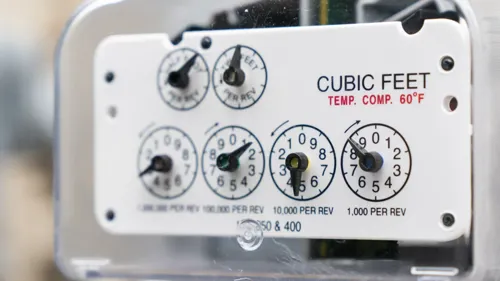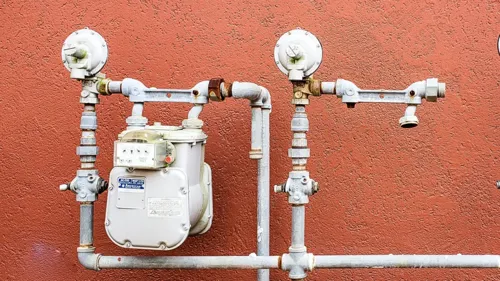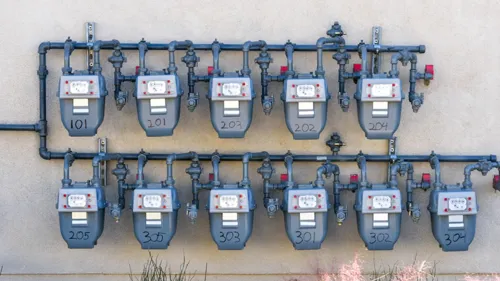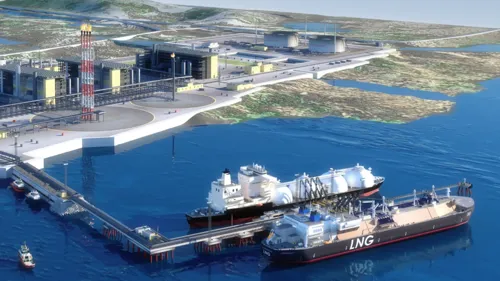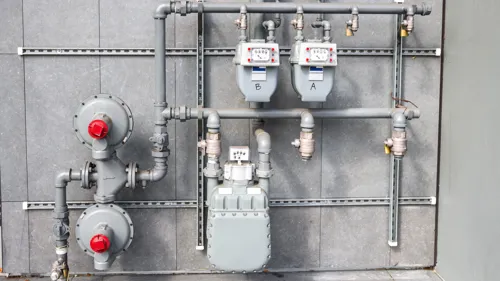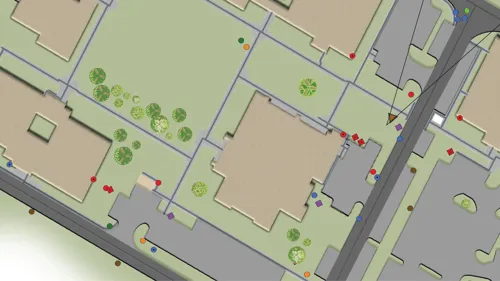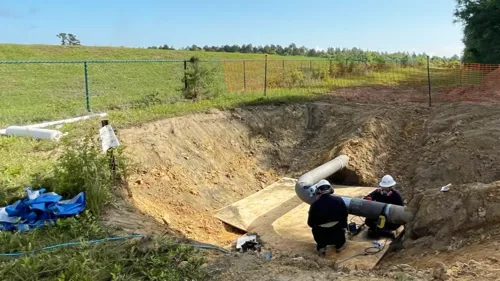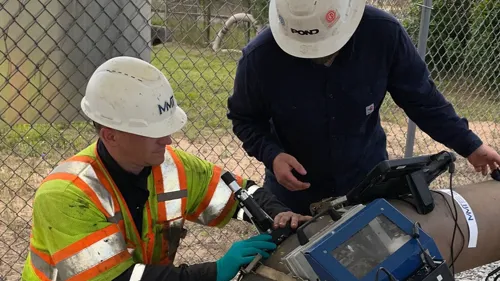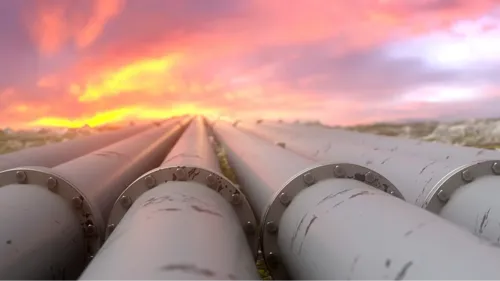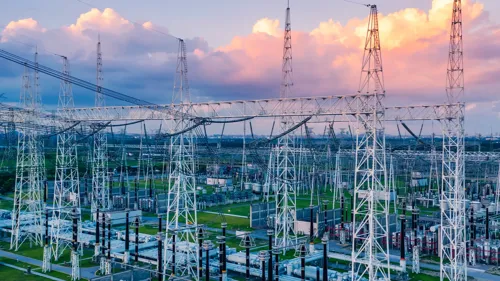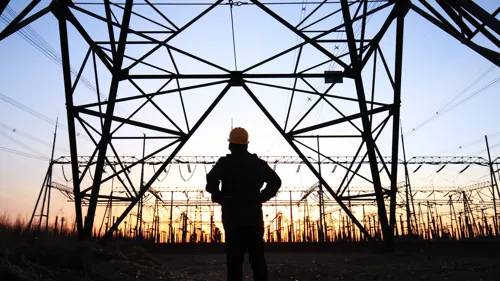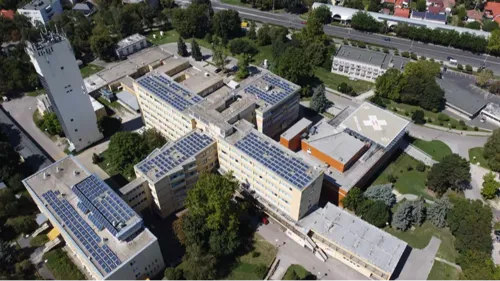The Power Market, Redefined: 6 Technologies Pond Is Watching Closely
Authors:
Adam Crotts | Associate Vice President | adam.crotts@pondco.com
Kandi Howell | Program Director | [email protected]

Introduction
The global energy landscape is rapidly transforming, driven by ambitious decarbonization goals, rapid technological innovation, like data centers, and evolving power consumption patterns. As utilities, governments, and private sector innovators pursue sustainable power solutions, the traditional centralized grid is shifting to include a more dynamic, decentralized, and resilient power system. At the forefront of this transition, Pond is helping clients navigate the complexities of modern power infrastructure, integrating emerging technologies into practical solutions. From microgrids to battery storage, here are six technologies shaping the power grid of the future:
1. Renewable Energy
Renewable energy has been in use for thousands of years, but in 2023, renewables surpassed coal in total U.S. energy production for the first time in more than a century. With wind, hydropower, and solar energy accounting for the largest sources of renewables, their total share of electricity generation now exceeds 20%, the second-largest contributor behind natural gas. Solar energy in particular has experienced rapid growth, due in large part to advancements in utility-grade photovoltaic cell technology. Increased capacity additions have helped drive this transition and are expected to continue gaining momentum, especially in key states like Texas and Oklahoma. Coal retirements are also expected to increase later in 2025. The U.S. Energy Information Administration forecasts an 8% decline in coal consumption in 2026, leading to a 6% decline in coal-based power production.
2. Hydrogen Fuel Cells
Hydrogen fuel cells are emerging as a key technology for decarbonizing multiple sectors, including transportation, industrial processes, and power generation. By using hydrogen as a clean fuel, these cells produce electricity with water as the only byproduct. Hydrogen can be produced from renewable energy sources, stored, and used in fuel cells to provide a flexible, emissions-free energy solution. This technology is particularly attractive for applications where batteries may not be practical, such as long-haul transportation and heavy industry. In 2023, Duke Energy announced plans to build what it is calling the first end-to-end system in the United States to produce, store, and combust 100% green hydrogen. Unlike other renewables, hydrogen is available on demand and can be stored long-term, making it more reliable than intermittent energy sources.
3. Energy Storage Systems
Energy storage systems are also revolutionizing the energy grid. Grid-scale batteries, including lithium-ion and newer alternatives like solid-state, flow, and sodium-ion batteries, provide essential storage for surplus energy, ensuring availability during peak demand or outages. Hydrogen storage is also emerging as a clean, flexible energy carrier, produced using renewable energy and stored for later use. Thermal storage systems, such as molten salt or phase-change materials, are being utilized to store energy in the form of heat for efficient and delayed consumption. In 2024, capacity growth from battery storage achieved a record high with more than 10 GW of new storage added. Capacity is expected to hit a new record in 2025, adding 18 GW of additional storage to the grid.
4. Microgrids
Decentralized energy systems are transforming the way energy is generated and distributed. Microgrids, which can operate independently or in conjunction with the main grid, provide localized power and improve resilience during outages. As of 2024, there are over 1,100 microgrids in operation in the United States, with Texas, California, and Alaska comprising more than half of them. Peer-to-peer energy trading, powered by blockchain technology, allows consumers to directly trade renewable energy with one another. Virtual power plants, which aggregate distributed energy resources like solar panels, wind turbines, and batteries, function as a unified power source, enhancing grid reliability and flexibility.
5. Energy Efficient Buildings
Energy-efficient buildings play a crucial role in reducing overall energy consumption and supporting the energy grid. Advanced building technologies, such as smart thermostats, energy-efficient appliances, and intelligent lighting systems, reduce the amount of energy required for heating, cooling, and other functions. According to Energy Star, a U.S. government program jointly run by the EPA and the DOE, certified buildings use 35% less energy than typical buildings nationwide. Additionally, buildings designed with energy-efficient materials, passive solar design, and improved insulation significantly lower energy use. Integration with renewable energy sources, like rooftop solar panels, allows buildings to generate and even store their own energy, contributing to a decentralized and resilient energy grid.
6. Small Modular Reactors
Small Modular Reactors (SMRs) represent a new generation of nuclear power technology that offers several advantages over traditional large-scale reactors. Unlike traditional nuclear power, which accounts for 19% of U.S. electricity generation, SMRs are compact, scalable, and can be deployed in remote locations or integrated into existing energy grids to provide reliable, low-carbon power. Their modular nature allows for easier manufacturing and quicker deployment, and their safety features make them a promising option for meeting growing energy demands while minimizing environmental impact. Though there are no SMRs currently operating in the US, the first SMR design was certified by the Nuclear Regulatory Commission (NRC) in 2023, with operation expected to begin in 2029.
Pond's Impact
Pond has provided design services for large-scale solar, battery storage solutions, as well as transmission, substation, and distribution utility infrastructure. Leveraging extensive design experience, Pond has served as a knowledgeable stakeholder in developing Energy-related UFC and UFGS criteria that lead DoD operations. This enables us to bring the latest in industry best practices and act as a resource when questions arise.
As the energy landscape shifts toward decarbonization and distributed generation, Pond plays a pivotal role in supporting the evolving energy grid by offering a broad suite of services that address infrastructure modernization, renewable integration, resilience, regulatory compliance, and advanced technologies. These services span planning, design, implementation, and long-term operations. Learn more about Pond's Power Generation & Delivery capabilities.
Expertise
- Grid Modernization and Infrastructure Upgrades
- Substation Design and Upgrades: Enhancing existing substations with smart controls and digital equipment
- Transmission and Distribution (T&D) Engineering: Designing new or upgraded T&D lines for increased capacity and efficiency
- Advanced Metering Infrastructure (AMI): Designing and deploying smart meters and data communication systems
- Undergrounding Initiatives: Replacing overhead lines with underground cables to improve resilience
- Renewable Energy Integration
- Interconnection Studies: Assessing feasibility and impact of connecting renewable energy sources
- Grid Impact Analysis: Evaluating how new renewable sources affect load flow, voltage, and stability
- Energy Storage Integration: Designing battery energy storage systems (BESS) to manage intermittency and grid balancing
- Microgrid Design: Planning and implementing decentralized energy systems for campuses, remote areas, or critical infrastructure
- Electrification and Decarbonization Support
- EV Infrastructure Planning: Site assessments, utility coordination, and design for electric vehicle charging stations
- Electrification Studies: Evaluating transition strategies for electric heating, transportation, and industrial processes
- Low-Carbon Fuel Transition: Assisting in adoption of hydrogen, renewable natural gas (RNG), or ammonia in grid-connected systems
- Grid Resilience and Reliability Engineering
- Grid Hardening: Reinforcing systems against extreme weather and natural disasters
- Resiliency Planning: Developing strategies for load shedding, black-start, and system islanding
- Disaster Recovery Planning: Engineering contingency plans and backup systems for critical infrastructure
- SCADA, Automation, and Digital Transformation
- SCADA System Design & Integration: Supervisory control and data acquisition systems for real-time monitoring and control
- Advanced Distribution Management Systems (ADMS): Engineering support for integrating ADMS with utility control centers
- Environmental and Regulatory Compliance
- Permitting and Environmental Assessments: Supporting compliance with local, state, and federal regulations
- NERC/FERC Regulatory Consulting: Ensuring grid infrastructure meets reliability standards and energy policies
- Energy Planning, Modeling, and Optimization
- Load Forecasting & Demand Response Modeling: Predicting future grid loads and designing demand management systems
- Integrated Resource Planning (IRP): Supporting utilities in long-term planning of energy resources and capacity
- Power Flow & Stability Studies: Performing simulations to ensure grid performance under varied conditions
- Construction Management and Commissioning
- EPCM (Engineering, Procurement, Construction Management): Full delivery of grid-related infrastructure projects
- Owner’s Engineer Role: Representing utility or developer interests during construction and commissioning
- Commissioning & Testing Support: Ensuring safe and effective grid integration before go-live
- Cybersecurity and Data Infrastructure
- Data Management & Integration: Designing secure architectures for integrating sensor and operational data
